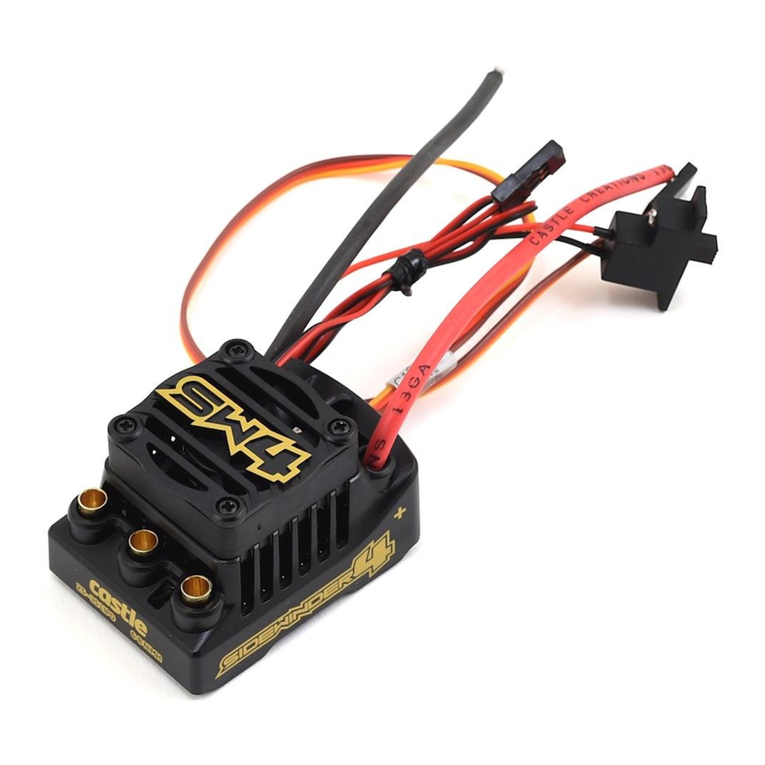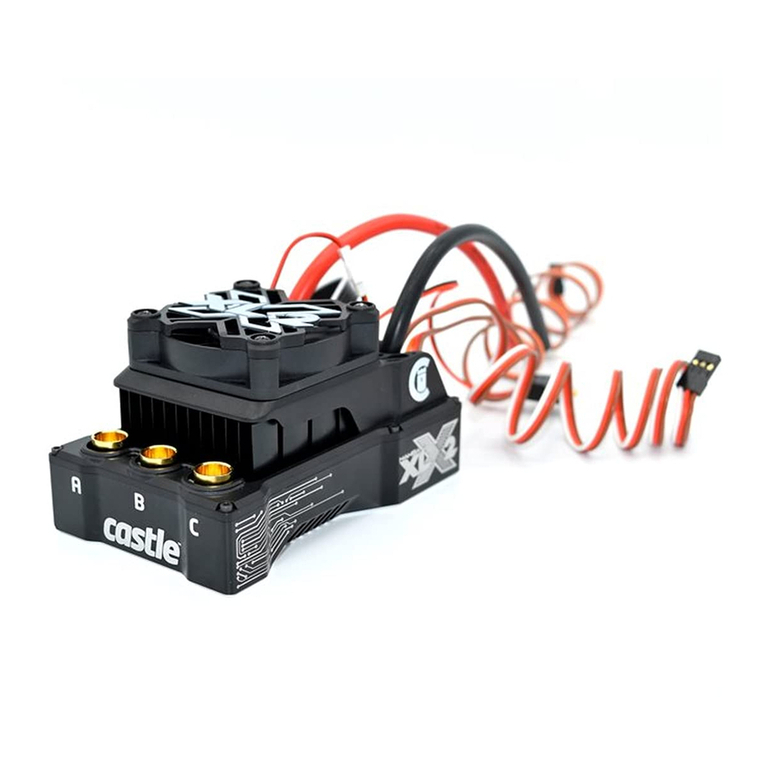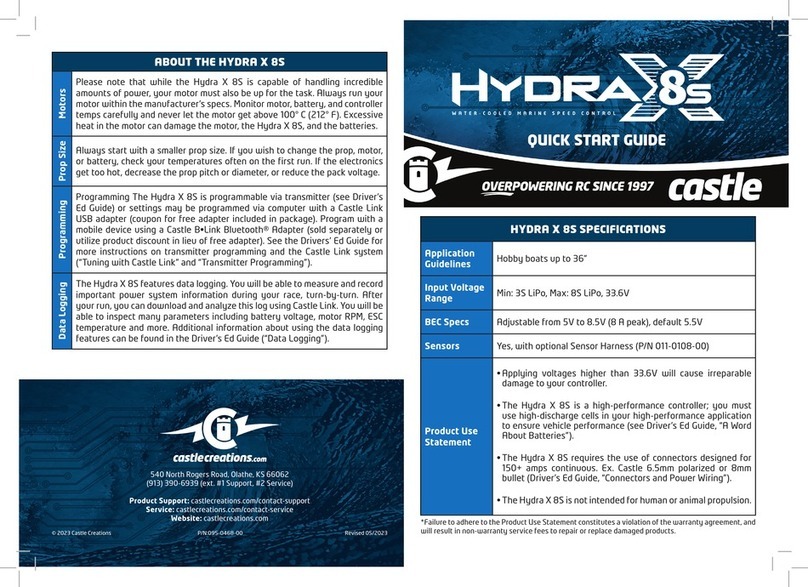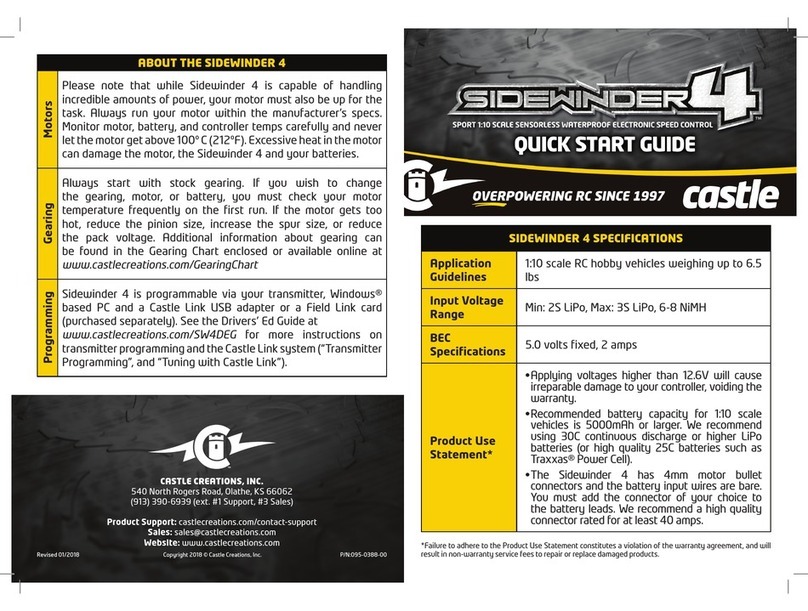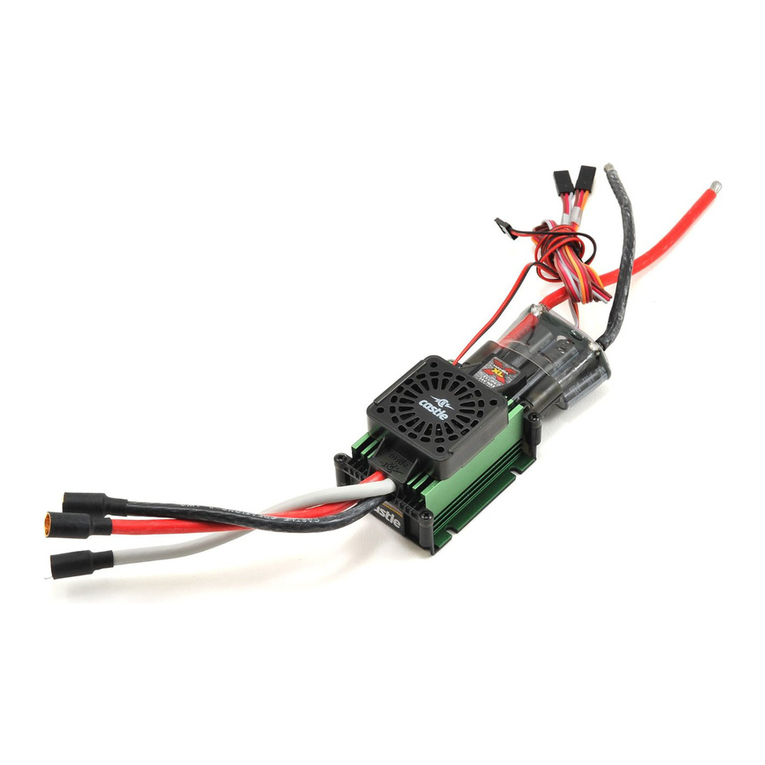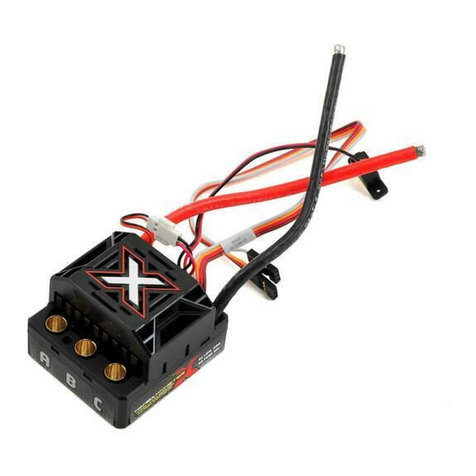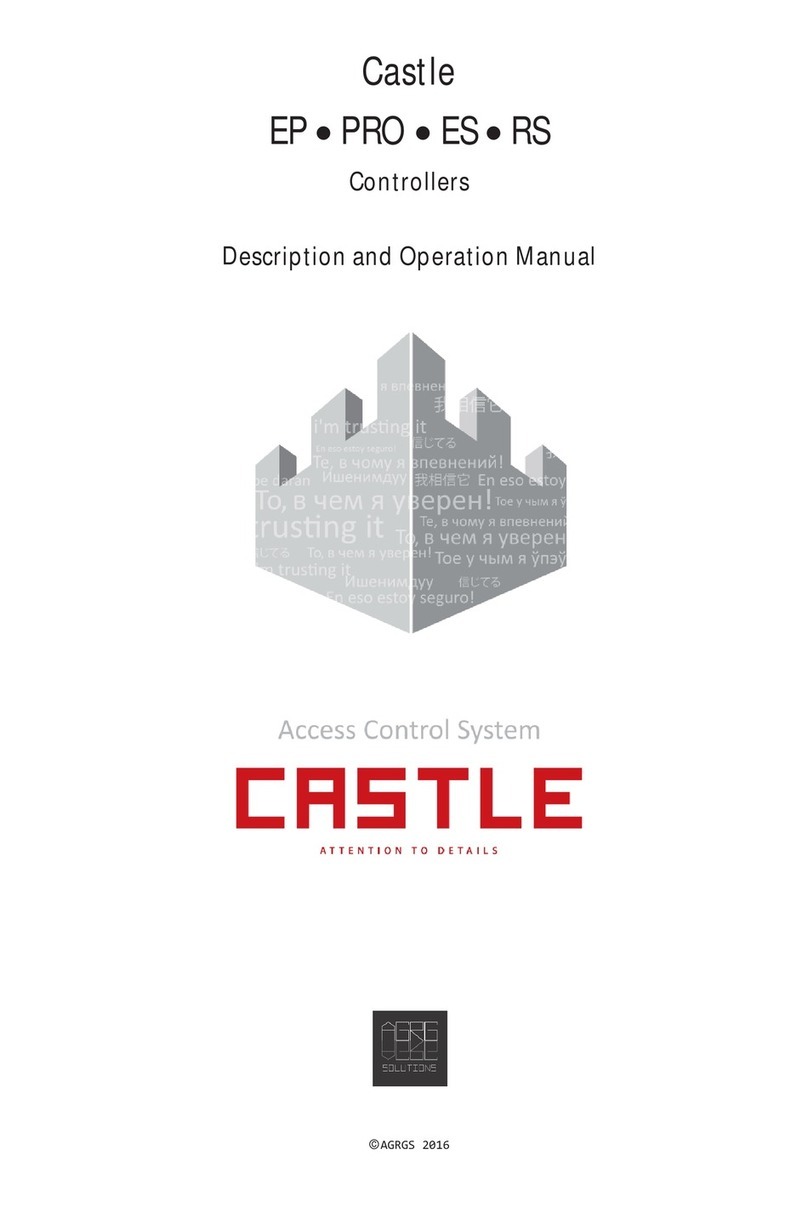PHOENIX-60
PHOENIX-60PHOENIX-60
PHOENIX-60
™
By Castle Creations
60 amp Brushless Sensorless Speed Control
PHOENIX-60™ User Guide Page 2 of 6 Rev 5-date 11/11/03
This document, Phoenix-60™ software, and Phoenix-60™ PCB layout are all Copyright 2002-2003 by Patrick del Castillo and Castle Creations
Warning! High power motor systems can be very dangerous! High currents can heat wires and
batteries, causing fires and burning skin. Follow the wiring directions carefully! Model aircraft
equipped with high power motors can kill. Always fly at a sanctioned field. Never fly over or near
spectators. Even though this controller is equipped with a safety arming program, you should still use
caution when connecting the main battery.
4.0 Using the Features of Your Phoenix-60™
BEC - The BEC power is supplied to the receiver and servos through the receiver connector wires. If you
wish to disable the BEC and use a separate receiver battery (required for the use of more than twelve cells),
you must first cut the red wire in the trio of receiver wires. Simply use a pair of wire cutters to remove a
short section of the red wire near the receiver connector, and be sure to insulate the cut wire with a bit of
electrical tape. Then you may safely use a battery with your receiver.
Brake - moving the transmitter throttle stick to the bottom position enables the prop brake.
Cutoff - The motor cutoff will occur when the input battery voltage drops below the programmed cutoff
voltage (factory preset at 5.0V) for more than one half second. Once motor cutoff has occurred, moving the
throttle to the braking position (full off) can re-arm the controller. This will allow restart of the motor at low
throttle after cutoff has occurred. WARNING: Repeated restarting of the motor may drain the battery
to a point where the radio receiver will stop operating, resulting in a loss of control of the model.
Loss of Transmitter Signal, or excessive radio noise cutoff - Motor cutoff will also occur if the signal from
the transmitter is lost, or if the radio noise becomes excessive. After radio connection has been reestablished,
moving the throttle to the braking position (full off) for one second can restart the motor.
Safe Power Up - The Safe Power up feature is a “finger saver”, designed to prevent the motor from starting
accidentally on power up. To arm the controller, the transmitter stick must be held in the “Brake” position
(all the way down) for at least four seconds. Until the controller is armed, it will not provide any power to
the motor, regardless of where the throttle stick on your transmitter is positioned. Before flying your
model, be sure to “blip” the throttle to ensure that the controller is armed.
LED – The LED is used for programming the features on the Phoenix-60™. Once armed, the LED also
provides an indication that the controller has reached full throttle by lighting solid when full throttle is
reached. If the unit is in Auto-Calibrating Throttle mode (program setting 4-1) then you may see full throttle
LED indication before the stick is in the full up position. Simply continue moving the stick to full up. The
controller will detect the high stick travel and adjust full throttle accordingly.
5.0 Troubleshooting
Everything is hooked up correctly, the BEC (receiver and servos) works, but the throttle does not
work.
The controller is not seeing the four seconds of “dead space” (low throttle) and is not arming. Try moving
your throttle stick all the way down, and moving the trim all the way down. Wait for four seconds and try the
throttle again. If it still does not arm, you may need to reverse the throttle control on your transmitter (see
your radio documentation). You may also check to make sure that your endpoint adjustments on your radio
(if it has them) are set all the way open.
Every time I throttle all the way up, the controller “cuts off” after a few seconds, even with fresh
charged batteries.
The controller will automatically shut down the motor if the battery voltage falls below the programmed
voltage cutoff (factory preset at 5.0V) for more than half a second. This is to protect your airplane from a
loss of control caused by too low a voltage at the receiver. If the cutoff is kicking in with fresh charged
batteries, it means that the voltage is dropping very quickly. This is usually an indication of a motor that is
drawing too much current for the batteries to handle. Try using a smaller prop on the motor, or using
batteries with a higher rating (for example, if you are using 800AR cells, you might try going to 1000SCR
cells.)
The LED comes on when I throttle up.
This is normal. The LED comes on when full throttle has been reached. If the unit is in Auto-Calibrating
Throttle mode (program setting 4-1) then you may see full throttle LED indication before the stick is in the
full up position. Simply continue moving the stick to full up. The controller will detect the high stick travel
and adjust full throttle accordingly.
Nothing seems to work, receiver and servos are dead, and the throttle is dead.
Check all connections to ensure that they are correct, and that the polarity (+/-) connections are correct. If
everything is correctly connected, and the receiver and servos still do not work, contact the dealer where you
purchased your Phoenix-60™ or Contact Castle Creations directly. (See info below)
6.0 Contact / Warranty Information
Your Phoenix-60™ is warranted for one(1) year from date of purchase to be free from manufacturing and
component defects. This warranty does not cover abuse, neglect, or damage due to incorrect wiring, over
voltage, or overloading. If you have any questions, comments, or wish to return your Phoenix-60™ for
warranty or non-warranty repair/replacement contact Castle Creations at:
Castle Creations Email: info@castlecreations.com
402 E. Pendleton Ave. Fax: (785) 883-4571
Wellsville, KS 66092 Website: http://www.castlecreations.com
Tel: (785) 883-4519
7.0 Phoenix-60™ Programming Features
Programming the Phoenix-60™
Programming the Phoenix-60™ is as simple as answering a few questions. The Phoenix-60™ asks questions
by flashing a setting number, followed by the possible setting values. There are eight settings that can be
programmed in the Phoenix-60™: 1) Cutoff voltage, 2) Current Limiting, 3) Brake Type, 4) Throttle Type, 5)
Timing Advance, 6) Cutoff Type, 7) Soft Start, and 8) PWM Switching Frequency.
As the programmer, you must answer “yes” or “no” to the setting values as they are presented by the
Phoenix-60™. The setting values are “flashed” out by the LED. Answering “no” to a setting value will
cause the Phoenix-60™ to ask for the next value. Answering “yes” to a setting value will store that setting in
the Phoenix-60™s permanent memory. After a setting is stored, the Phoenix-60™ will continue to ask about
other settings until all settings have been stored. NOTE: If you answer “no” to all values for a particular
setting, the Phoenix-60™ will keep whatever value had been previously programmed. Only by answering
“yes” to a value will the Phoenix-60™ store/change that value.
When answering a question, you will need to move the transmitter stick to the yes (full on throttle) position
or the no (full off throttle) position and keep it there for about 5 seconds. When the Phoenix-60™ has
accepted your answer, it will flash the LED rapidly. After the LED starts it’s rapid flashing, move the throttle
stick to the middle position to confirm that you are ready for the Phoenix-60™ to ask the next question.
You are not required to continue through all eight programming options. For example, if you wish only to
change the Cutoff Voltage (option 1) then after programming that setting you can disconnect power from the
Phoenix-60™ and proceed to the arming sequence (see Section 3.0). Disconnecting the controller in the
middle of programming simply retains the values for the remaining programming options that were
previously set up.

